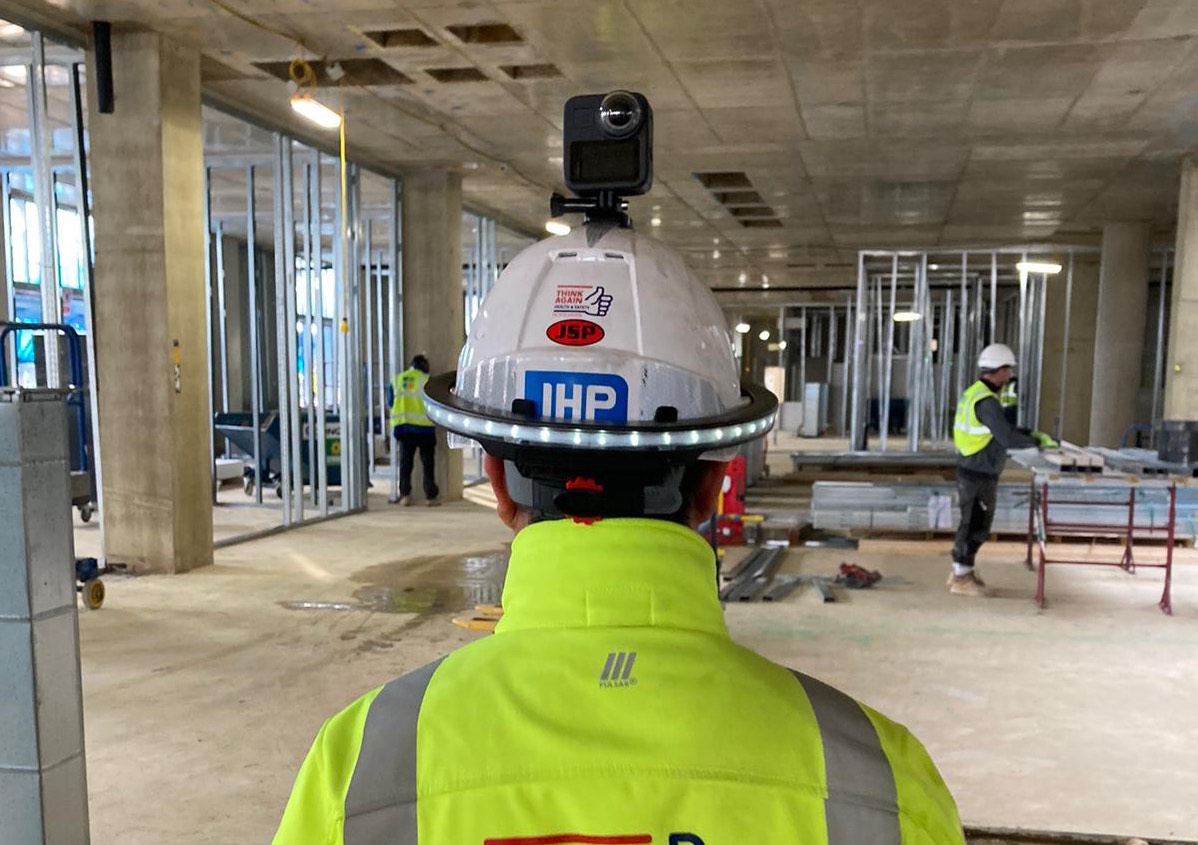
The combination of technology and acting on the data it produces is helping IHP, the Vinci Building/Sir Robert McAlpine JV, to transform healthcare construction, according to Mark Gibson MCIOB of Sir Robert McAlpine.
The National Audit Office recently cited out-of-date IT as one of the factors slowing progress and increasing costs in major public projects, such as the New Hospital Programme. This finding underlines the converse: the transformative impact digital technologies can have in healthcare developments.
In recent years, the pace of innovation in digital construction has been impressive, and we are increasingly seeing the results that these new tools can deliver: improved efficiency and productivity, reduced costs, streamlined collaboration both in project teams and across organisations, and better use of resources.

“Construction is sometimes regarded as traditional and slow to adapt to new ways of working. That is changing, with a growing understanding of the value of new technology.”
Digital tools for every job
The technologies available range from foundational tools that are part of how site teams go to work every day, such as Dalux software that brings together floor plans, site capture and 3D models; to those that are right at the leading edge of what is currently technically possible, such as Buildots and Disperse, which incorporate programme information, live progress and AI.
IHP, the joint venture between Vinci Building and Sir Robert McAlpine, is pushing boundaries by using Buildots in the construction of The BEACH Building, part of the Royal Bournemouth Hospital estate. It uses helmet-mounted 360-degree cameras to capture progress images, which AI then combines with schedule data and 3D BIM modelling. The tool informs project teams where there are issues, and harnesses predictive analysis to identify how delays can play out. As a result, time is saved, there is better collaboration with trades, and delays are avoided.
At The BEACH Building, instead of individual discipline and package managers walking the 8km site every week, one person can cover the ground, and progress inspections are exact and comprehensive, ensuring, through the technology used, that nothing is missed.
Value beyond the build programme
Digital technologies integrated into projects can deliver value throughout the lifecycle of a building and to end users’ experiences, as well as during the build.
In The BEACH Building, accurate digital data will be transferred to the University Hospitals Dorset NHS Foundation Trust as the basis for effective ongoing maintenance, replacing the paper logs that are still common in the NHS estate.
Digital systems will also support state-of-the-art security in the building’s new maternity facilities, allowing doors to lock automatically when triggered, to keep babies safe.
On the Derby Kingsway Hospital site, which is also being delivered by IHP, we have seen how visualisation software can facilitate invaluable engagement with stakeholders, allowing them to input into design. Using Twinmotion, we have worked closely with nurses, doctors and patients on interiors for a new psychological intensive care unit. In settings like these, where every risk must be minimised and access after completion would be a challenge, technology ensures the build is absolutely right for users, first time.
The culture and education challenge
“We must commit time to train our people and monitor ongoing digital adoption, as well as cascading education through supply chains and ensuring access is made available to our technology tool stack.”
The construction industry is sometimes regarded as traditional and slow to adapt to new ways of working. That is changing, with a growing understanding of the value new technology can deliver, especially in healthcare, where there can be much pressure on the estate.
Embedding a culture of digital literacy is key. There must be engagement in new ways of working at every level, from the board and executive leadership to project managers, supply chain and teams on site. As an industry, we must commit time to train our people and monitor ongoing digital adoption, as well as cascading education through supply chains and ensuring access is made available to our technology tool stack. No tool is effective if it’s not used to its full potential. Our dedicated digital construction professionals enable this on site to support project delivery.
Collaboration will also play its part. Effective joint ventures, such as our IHP partnership with Vinci Building, are an opportunity to learn from one another and develop blueprints specifying ‘best in breed’ digital tools that can be rolled out on every project.
The future is digital
Digital tools are already delivering benefits for healthcare clients: programme efficiencies; better engagement with clinicians and patients to enhance designs; and data to improve the maintenance of buildings.
Importantly, these tools also enhance teams’ ability to collate the golden thread of information required by the Building Safety Act. This provides a digital footprint of accountability and transparency, as well as a means to quickly and accurately capture required information in a digitalised format.
We are supporting the future development of healthcare through advising healthcare leaders around digital transformation. We share best practice, real-world feedback and technical advice to ensure the next wave of healthcare facilities stipulate and utilise digital technology for all stakeholders, ensuring we have future-proof and smart-enabled hospitals.
Taking an active role in the development of new technology means we can shape developments to best meet the needs of our clients and our people. In recent months, for example, we have piloted innovative technology including the XYZ Reality AR tool, and the HP Site Print robot.
As they become ever more effective, practical and commercially viable, tools like these will support construction delivery, potentially supporting the pressures on labour, improve quality and free up construction professionals to focus time on more complex engineering challenges.
Mark Gibson is managing director of healthcare at Sir Robert McAlpine.
Don’t miss out on BIM and digital construction news: sign up to receive the BIMplus newsletter.













